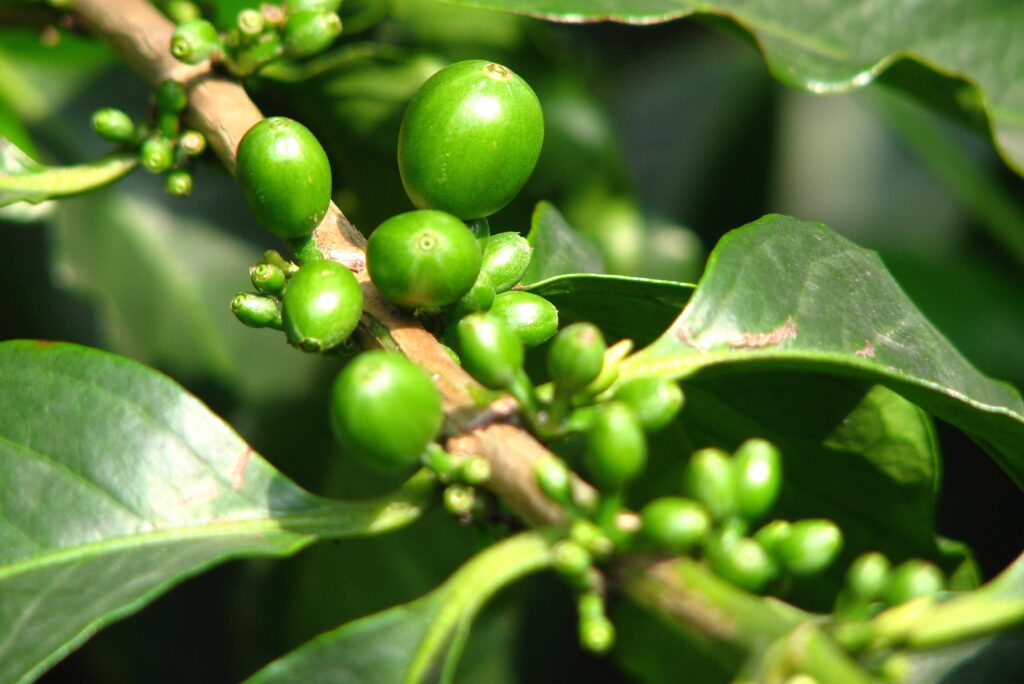Green Coffee Harvesting
- Picking: Coffee cherries are typically hand-picked to ensure only the ripe ones are selected. This can be labor-intensive but ensures better quality.
- Sorting: After picking, the cherries are sorted to remove any unripe or damaged ones.
Processing Methods
There are two main methods for processing green coffee beans:
- Dry (Natural) Process
Drying: The cherries are spread out on large drying beds or patios to dry in the sun. This can take several weeks, during which the cherries are regularly turned to ensure even drying.
Hulling: Once dried, the outer skin and parchment layer are mechanically removed, leaving behind the green coffee beans. - Wet (Washed) Process
Pulping: The cherries are de-pulped to remove the outer skin and most of the fruit flesh.
Fermentation: The beans are then fermented in water to remove the remaining mucilage.
Washing: After fermentation, the beans are thoroughly washed to remove any remaining residue.
Drying: The beans are dried to the desired moisture content, usually on drying beds or patios.
Final Steps
- Milling: The dried beans are hulled to remove any remaining parchment and polished to improve their appearance.
- Grading and Sorting: The beans are graded and sorted based on size, weight, and quality.
- Packaging: The green coffee beans are then packaged for export.
Growing Green Coffee
The best places for growing (breeding) green coffee are regions with specific climate conditions, typically known as the “Coffee Belt.” These regions have the optimal altitude, temperature, and rainfall needed for coffee cultivation. Here are some key coffee-growing regions:
Coffee-Growing Regions
- Latin America
o Brazil: The largest coffee producer in the world, known for its diverse coffee varieties.
o Colombia: Renowned for its high-quality Arabica beans.
o Costa Rica: Famous for its rich, full-bodied coffee. - Africa
o Ethiopia: Often considered the birthplace of coffee, known for its unique and complex flavors.
o Kenya: Produces coffee with bright acidity and fruity flavors.
o Tanzania: Known for its rich, aromatic beans. - Asia
o Vietnam: The largest producer of Robusta coffee, known for its strong and bold flavor.
o Indonesia: Includes regions like Sumatra and Java, known for their rich, earthy coffee.
o India: Produces both Arabica and Robusta varieties with distinct flavors. - Central America
o Guatemala: Known for its high-altitude coffee with a unique flavor profile.
o Honduras: Produces high-quality coffee with diverse flavor notes.
o Panama: Famous for its rare and expensive Geisha coffee.
Climate Requirements
Altitude: Ideal coffee-growing regions are usually located at altitudes between 800 to 2,200 meters above sea level.
Temperature: Optimal growing temperatures range from 60°F to 70°F (15°C to 24°C).
Rainfall: Consistent rainfall of about 60 to 100 inches per year (1,500 to 2,500 mm) is ideal.

